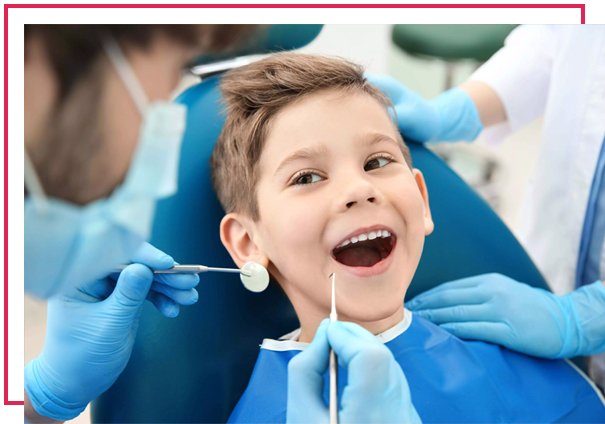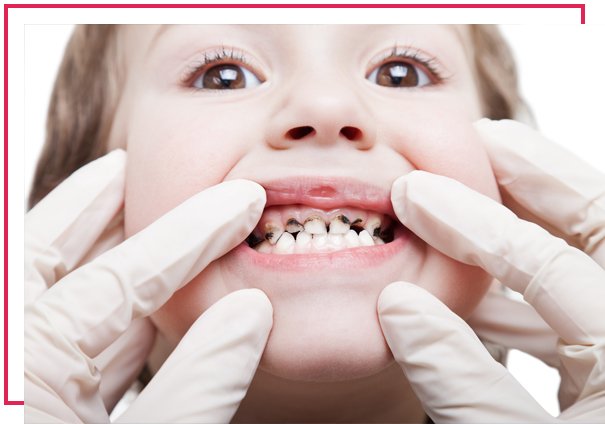
What is pedodontics?
Pedodontics (pediatric dentistry) is a department which aims the protection of the milk and permanent teeth of the children aged 0-13, eliminates the problems like cavities, trauma, hereditary and similar factors.

What treatments does Pedodonti apply?
• Protective applications
• Dental care training in children
• Dental cleaning
• Placeholders
• Fissure sealant applications
• Fluoride applications
• Special treatments for children
• Caries treatments
• Fracture treatments
• Treatment for tooth dislocation or complete removal
• Dental extraction treatments

When do the milk teeth come out?
Milk teeth begin to erupt on average in the sixth and eighth months after the birth and are located in the upper and lower jaw when the child is 2,5 years old (30 months old), including 20 teeth. As a result of the growing of permanent teeth under the milk teeth in the anterior area around at the age of 6-7, the roots of the milk teeth begin to melt and after a while the milk teeth are pulled or drop.

What are the common symptoms in children while teeth?
During the continuation of primary teeth some general and regional changes are observed in infants. These are loss of appetite, weight loss, diarrhea, restlessness, increased saliva flow, itching and redness in the gums. There is no cure for the elimination of these findings. However, gel can be used externally to feed the baby comfortably and relief of the pain. In addition, some syrups can be used to resolve the itching.

When should be the first visit to the dentist?
Children should be taken to the dentist for the first dental check after it evaporated. After that children should visit to the dentist every 6 months in order to control. Clinical examination by a dentist of the child is two-fold:
Stage 1: Outside Oral Examination
This region in the head-side inspection the size, shape and ratios are observed.
Stage 2: Oral Examination
This study examined the teeth, mouth open, teeth and soft tissues, while the observations made in case of closing the covers.

When does the brushing start?
Oral care should be initiated when the baby is 6-8 months old (ie when the first teeth appear in the mouth). It is recommended to clean the teeth by wiping a clean gauze or gauze cloth before going to bed and after breakfast in the morning. The use of toothbrushes is recommended when the child’s milk molar tooth is erupted (approximately when the child is 2.5-3 years old).

What are the measures to be taken for tooth decay in children?
There is still no medication to prevent tooth decay or for its self-healing. However, with preventive measures, it is possible to reduce the formation of decays and increase the resistance of the teeth against decays. Among these methods, the process of covering the teeth with the material we call ”fissure sealant” comes first. Tooth decays usually start in the so-called “fissure” grooves that are on the chewing parts of molar tooth and premolar. With the material we mentioned, it is prevented from decaying and the leakage of substances such as bacteria and food residue. This process is applied to milk and permanent teeth. Another way to prevent cavities is to increase the resistance of the teeth to decay. This can be done by topical fluoride application; it increases the resistance of teeth to decay.

Fluori̇de implementations
Fluoride is an element that prevents the tooth decay and strengthens the structure of the teeth. Fluoride is found in certain nutrients such as in toothpastes. However, because children often neglect to brush their teeth, they don’t take enough fluoride to gain resistance against cavities. In order to prevent this situation “superficial fluoride” implementations are made. The implementation of superficial fluoride is particularly applicable in children whose teeth tend to decay. Thus, sufficient amount of fluoride is stored on the teeth and the structure of the teeth is strengthened by providing resistance to decay.

Fi̇ssure sealant (dental vacci̇ne) implementati̇ons
Teeth chewing surfaces are indented. These varioles and mounds are called pits and fissures. These areas are quite narrow and are often the places where the cavities start because the food is not cleaned. In order to prevent the accumulation of food and microorganisms in these areas and thereby tooth decay, a special fluid padding is used. First, this area is completely cleaned and the fluff filling we call the fissure filler is implemented to this area.





